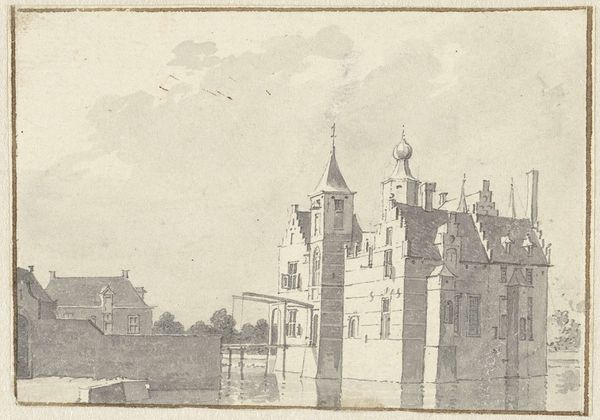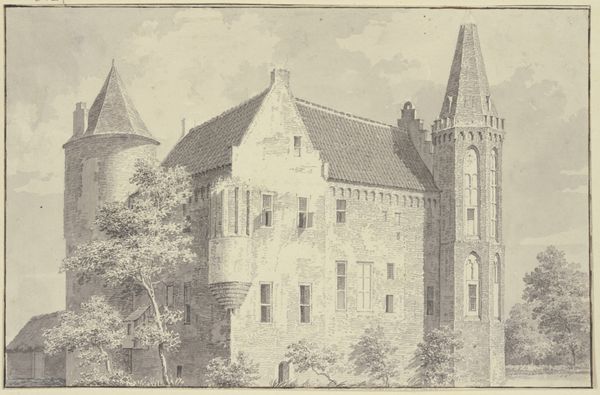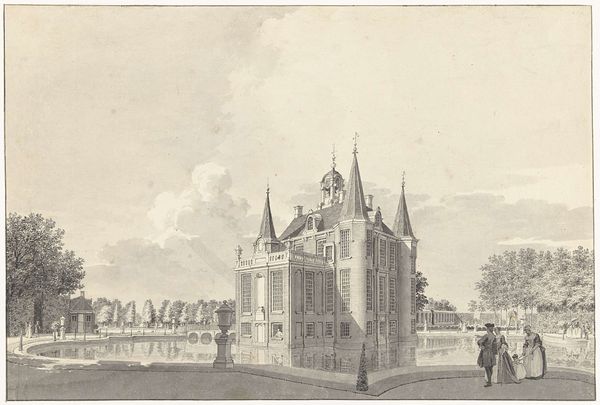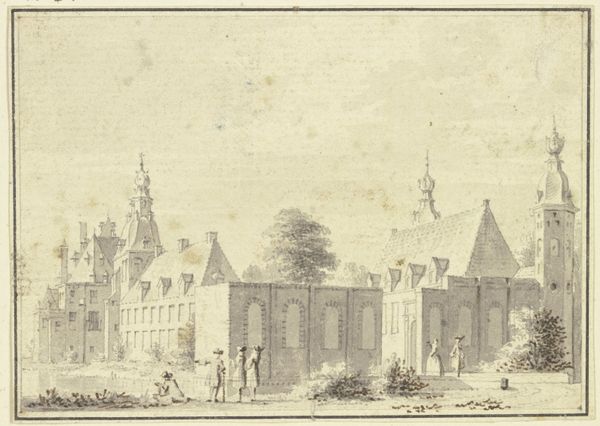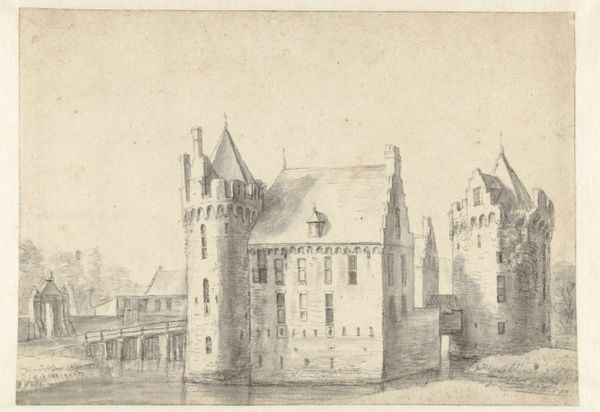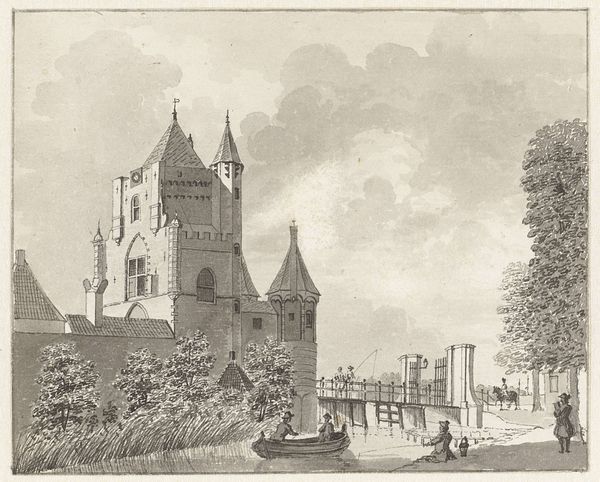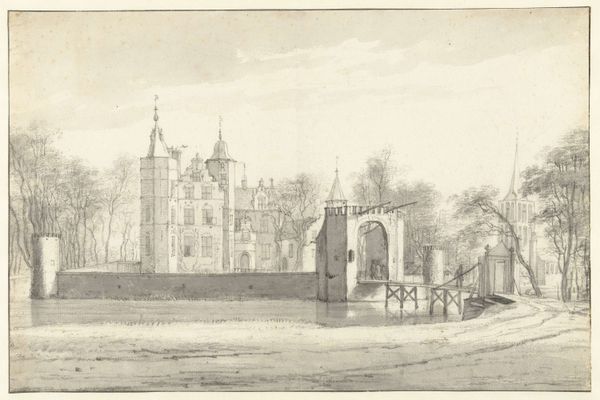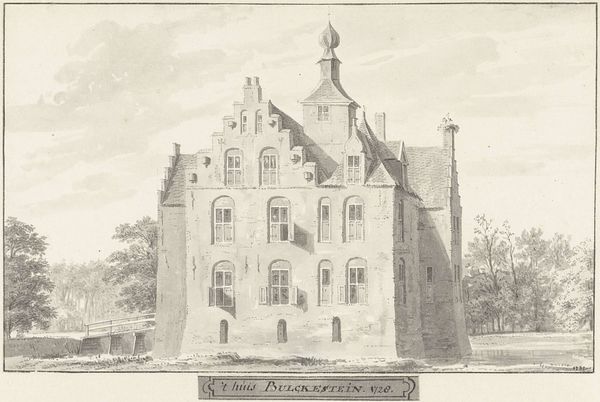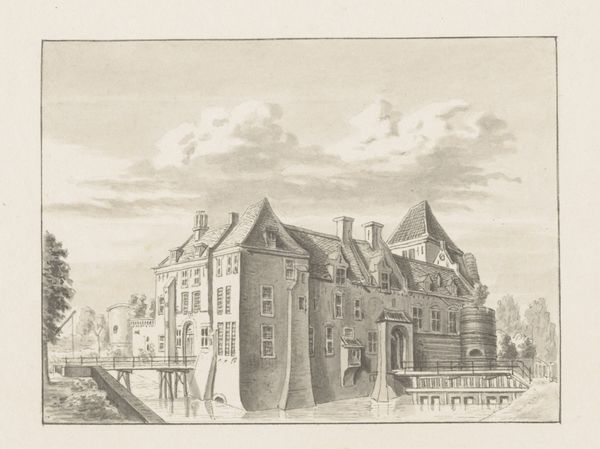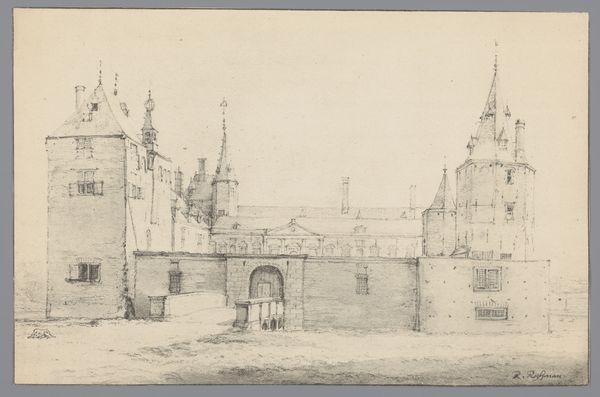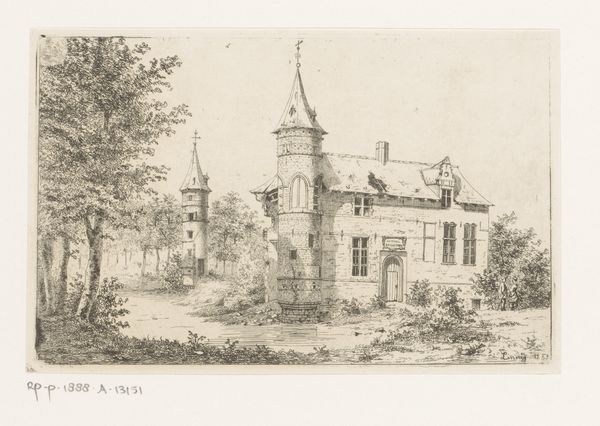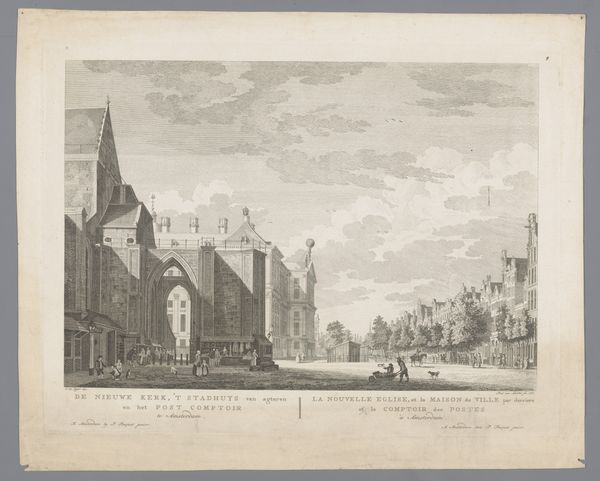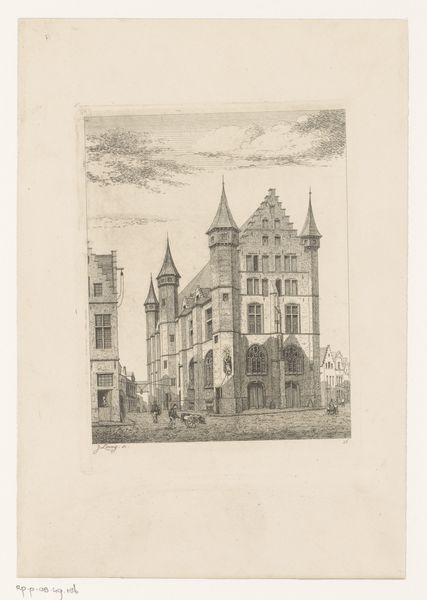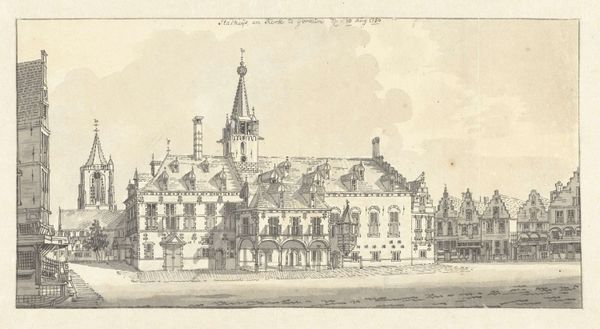
drawing, ink, architecture
#
drawing
#
baroque
#
landscape
#
ink
#
15_18th-century
#
cityscape
#
architecture
Copyright: Public Domain
Curator: It feels so muted and grey. Are we looking at a rather overcast day in the countryside? Editor: This is Cornelis Pronk's "t'Huis den Ooy van vooren," created around 1731 to 1733. It’s rendered in ink, so that accounts for the tonality. The artwork presents the stately home from a frontal perspective, likely a commission from the owners themselves. Curator: Knowing that it was commissioned makes a big difference. The precision in the line work really stands out. I find myself wondering what kind of paper Pronk would have used. What was its source, and how might its quality influence the lasting visibility of these fine details? The architectural rendering is quite exacting. Editor: Yes, indeed. Pronk’s meticulous documentation style was much in demand at that time. These images served as records, status symbols, even tools for estate management and public perception. They were luxury goods promoting specific narratives of land and property ownership. It’s fascinating to consider who this image was meant for, how it circulated, and the statement it intended to make about the inhabitants and the importance of the estate within its historical moment. Curator: It’s clear Pronk paid close attention to the tactile aspects of the scene. The way the ink creates varying depths – the rough texture of the stonework juxtaposed against the smooth water surface in the moat, for instance – is beautifully done. One wonders about his tools – the nibs he used, the specific inks, maybe even the water he diluted it with to achieve those shades. The craft itself tells a silent story of production and technique. Editor: Absolutely. The positioning of the house, facing us, with its reflection shimmering in the water, implies a sense of cultivated harmony, projecting power and control during the period when the Dutch elite aimed to express themselves via the landscape. Consider the social underpinnings of the piece; the building itself acting as an advertisement for both owner and architect alike. Curator: Examining the material components enhances our awareness of the sheer labor invested, both artistically and architecturally. Editor: Yes, it prompts us to think about who benefited from and who might have been excluded from this idyllic portrayal of 18th century opulence. Curator: Well, I know I’m definitely adding Pronk to my list of artists to explore further. I appreciate that his precise craft provides us with insight into materials, tools, and hands. Editor: For me, thinking about Pronk through the lenses of social history emphasizes art's embeddedness in culture and politics. Thank you.
Comments
No comments
Be the first to comment and join the conversation on the ultimate creative platform.
